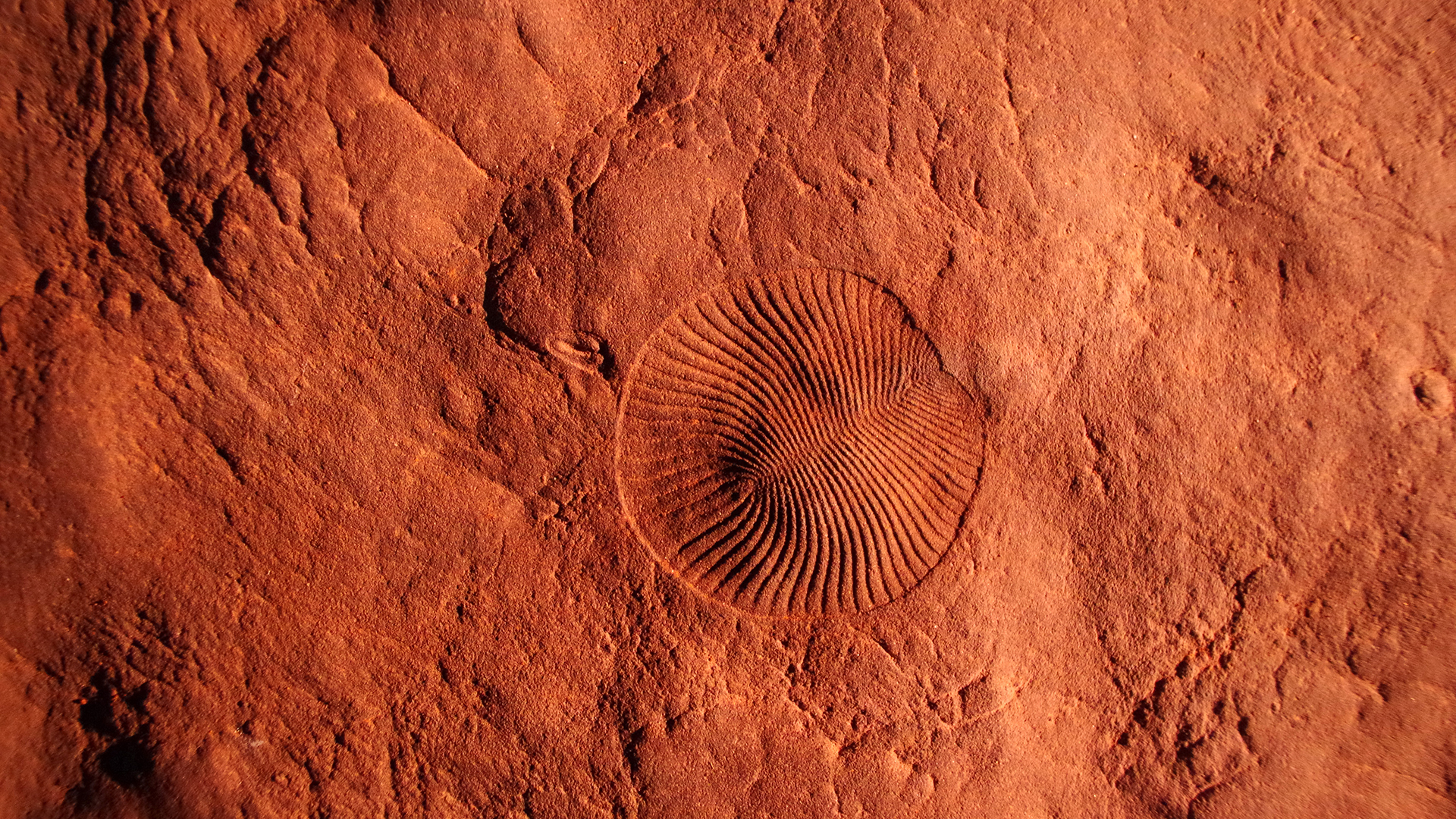Scientists just found a hidden 6th mass extinction in Earth's ancient past
A global drop in oxygen levels about 550 million years ago led to Earth's first known mass extinction, new evidence suggests.

The height of the Ediacaran period, about 550 million years ago, was a boom time for life in Earth's oceans. Petalonamids shaped like feathers sucked nutrients from the water, slug-like Kimberella grazed on microbial mats, and the ancestors of jellyfish were just beginning to make waves.
But then 80% of life on Earth disappeared, leaving no traces in the fossil record.
Now, a new study suggests that these missing fossils point to the earliest known mass extinction event on Earth. These first communities of large, complex animals were killed by a steep global decline in oxygen — a finding that may have implications for modern ocean ecosystems threatened by human activities.
"This represents the oldest recognized major extinction event in the fossil record of animals," said lead study author Scott Evans, a postdoctoral researcher at Virginia Tech. "It is consistent with all major mass extinctions, in being linked to climate change."
Related: The 6th mass extinction hasn't begun yet, study claims, but Earth is barreling toward it
Animals have passed through the evolutionary crucible of mass extinctions at least five times. There were the Ordovician-Silurian and the Devonian extinctions (440 million and 365 million years ago, respectively), which killed off many marine organisms. Then, there were the Permian-Triassic — also known as the "Great Dying" — and Triassic-Jurassic extinctions (250 million and 210 million years ago, respectively), which affected ocean vertebrates and land animals. The most recent mass extinction, about 66 million years ago at the end of the Cretaceous period, wiped out approximately 75% of plants and animals, including nonavian dinosaurs.
Whether one more mass extinction should be added to that list has been an open question among paleontologists for some time. Scientists have long known about the sudden decline in fossil diversity 550 million years ago, but it was unclear if that was due to a sudden mass extinction event.
Get the world’s most fascinating discoveries delivered straight to your inbox.
One possible explanation could be that early trilobites — armored and often helmet-headed marine arthropods — began competing with Ediacaran fauna, causing the latter to die out. Another possible explanation is that Ediacaran fauna lived on, but the conditions necessary for preserving Ediacaran fossils existed only until 550 million years ago. "People recognized that there was a change in biota at this time," Evans said. "But there were significant questions about what the causes might be."
To answer those questions, Evans and his colleagues compiled a database of Ediacaran fossils that other researchers had previously described in scientific literature, sorting each entry by factors such as geographic location, body size and feeding mode. The team cataloged 70 animal genera that lived 550 million years ago and found that only 14 of those genera were still around 10 million years later. They noticed no significant changes in the conditions necessary for preserving fossils, nor did they find the sort of differences in feeding modes that would suggest that the Ediacaran animals died out due to competition with early Cambrian animals, like trilobites.
But there was one common thread among the organisms that survived: body plans with high surface area relative to volume, which can help animals cope with low-oxygen conditions. That observation, combined with geochemical evidence of a decline in oxygen 550 million years ago, suggests that the Ediacaran may have ended in a mass extinction event caused by low oxygen availability in the ocean. The researchers published their findings online Nov. 7 in the journal Proceedings of the National Academy of Sciences.
"We examined the selectivity pattern — what went extinct, what survived, and what flourished after the extinction," said study co-author Shuhai Xiao, a professor of geobiology at Virginia Tech. "It turns out that organisms that cannot cope with low oxygen levels were selectively removed."
Why oxygen levels plummeted in the waning years of the Ediacaran remains a mystery. Volcanic eruptions, tectonic plate movements and asteroid impacts are all possibilities, Evans said, as are less-dramatic explanations, such as changes in nutrient levels in the ocean.
Regardless of how it happened, this mass extinction likely influenced the subsequent evolution of life on Earth and may have implications for scientists studying how animal life got started.
"Ediacaran animals are pretty strange — most don't look anything like the animals we know," Evans said. "After this extinction event, we start to see more and more animals that look like ones around today. It may be that this early event paved the way for more modern animals."
The findings may also hold lessons about human threats to aquatic life. Various agricultural and wastewater practices have introduced nutrients such as phosphorus and nitrogen into marine and river ecosystems, thus increasing the amount of algae that decompose in the water and consume oxygen. The spread of "dead zones," where oxygen levels in the water are too low to sustain life, could pose similar challenges to modern animals.
"This study helps us understand the long-term ecological and geological impacts of oxygen-deficiency events," Xiao said.

Joshua A. Krisch is a freelance science writer. He is particularly interested in biology and biomedical sciences, but he has covered technology, environmental issues, space, mathematics, and health policy, and he is interested in anything that could plausibly be defined as science. Joshua studied biology at Yeshiva University, and later completed graduate work in health sciences at Cornell University and science journalism at New York University.



